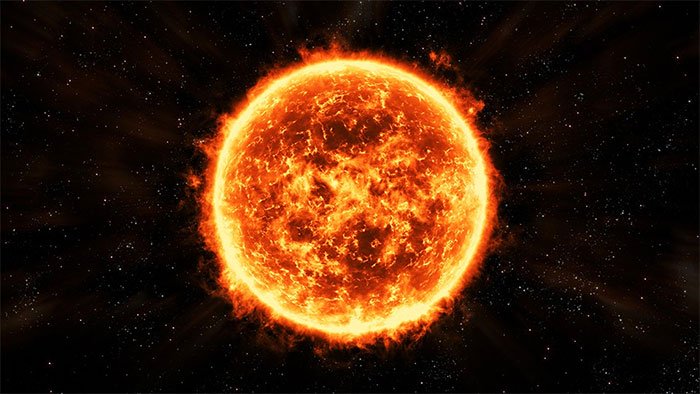Why does the sun glow and generate heat?
The sun is like a hot, dazzling fireball. Every hour it radiates a large amount of energy, emitting light and heat in the universe, including our Earth.
But the amount of sunlight the Earth receives is only 1 / 2.2 billion of the sun's total radiant energy. We can imagine the power of the Sun as follows, if there is a 12 m thick layer of ice covering the sun's surface, after only 1 minute, the sun's heat will melt the entire ice layer. What is even more amazing is that the Sun has been shining like this for billions of years.
People have long wondered: Where does the sun's enormous energy come from?
Naturally, the Sun does not have to be burned normally, because even the best quality oxygen and coal gas, about the mass of the Sun, can only sustain light burning for 2500 years. But the age of the Sun is much longer than that, probably billions of years.

Atomic nuclear reactions have solved the riddle of solar power.
In 1854 German scientist Kaimuhop first introduced the scientific theory of solar energy. He said that the gases on the Sun constantly generate heat, so it constantly cools and shrinks. These contraction materials fall into the Sun again, producing energy to constantly replenish the lost solar energy. By calculating the diameter of the Sun every 100 m, the shrinkage energy produced is sufficient to offset the energy it has radiated. Unfortunately, even though the initial diameter of the Sun may be equal to the orbital diameter of the farthest planet in the Solar System, its shrinkage to the end is only enough to sustain the Sun illuminating 20 million. year.
In the nineteenth century, there were some scientists who thought that the Sun was glowing because the stars falling on the Sun produced heat, chemical reactions, decay of radioactive elements, etc. . But all of this does not release a huge amount of energy enough for the Sun to generate such large and long energy.
In 1938, the atomic nuclear reaction was discovered, finally explaining the riddle of the solar energy. The reason the Sun emits such a huge source of energy is due to the atom's nuclear nuclear reaction. The sun is naturally rich in hydrogen. At the center of the Sun under high pressure (15 million ° C) under high pressure, hydrogen atomic nuclei interact with each other in combination with helium atomic nuclei, thus simultaneously releasing an infinite amount of light and heat. like that.
So the process of solar heat generation is not a common phenomenon as we thought.In the Sun the fusion reactions of hydrogen turn into helium, which is the Sun's largest energy source. On the Sun, the amount of hydrogen involved in this thermonuclear reaction is plentiful, at least able to provide the Sun with continued light and heat generation for another 5 billion years.
Later, although all the hydrogen in the Sun could be burnt off, there is also the fusion reaction of other elements, so the Sun can continue to glow and emit heat forever.
- 40 interesting, unexpected facts about the sun that you do not know (P1)
- 40 interesting, unexpected facts about the sun that you do not know (P2)
- Generate electricity from the body's heat
- Mysterious red orange glow on the Pacific Ocean
- Use volcanoes to produce electricity
- Shorts and sleeping bags can generate electricity
- Is it possible to use a quantum tunnel to generate electricity?
- Danger when temperatures rise
- VN: Synthesis of heat to heat
- Carbon nanotube can generate large currents
- Oral heat - causes, symptoms and cures
- The shocking truth about human heat tolerance
- Effective solution against heat on the terrace
- Most amphibians can glow in the dark
 Van Allen's belt and evidence that the Apollo 11 mission to the Moon was myth
Van Allen's belt and evidence that the Apollo 11 mission to the Moon was myth The levels of civilization in the universe (Kardashev scale)
The levels of civilization in the universe (Kardashev scale) Today Mars, the sun and the Earth are aligned
Today Mars, the sun and the Earth are aligned The Amazon owner announced a secret plan to build a space base for thousands of people
The Amazon owner announced a secret plan to build a space base for thousands of people